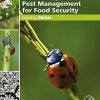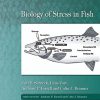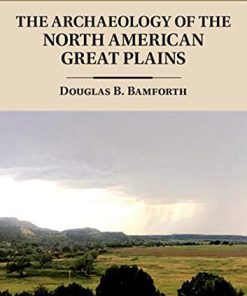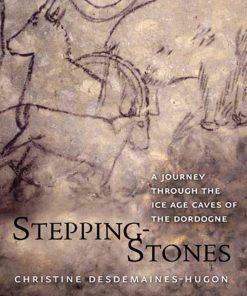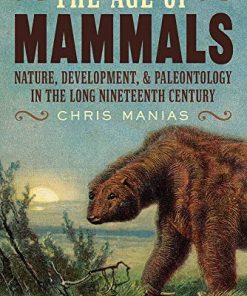Giant Sloths and Sabertooth Cats Extinct Mammals and the Archaeology of the Ice Age Great Basin 1st Edition by Donald K Grayson ISBN 9781607814696 1607814692
$50.00 Original price was: $50.00.$25.00Current price is: $25.00.
Giant Sloths and Sabertooth Cats: Extinct Mammals and the Archaeology of the Ice Age Great Basin 1st Edition by Donald K. Grayson – Ebook PDF Instant Download/Delivery: 9781607814696, 1607814692
Full download Giant Sloths and Sabertooth Cats: Extinct Mammals and the Archaeology of the Ice Age Great Basin 1st Edition after payment
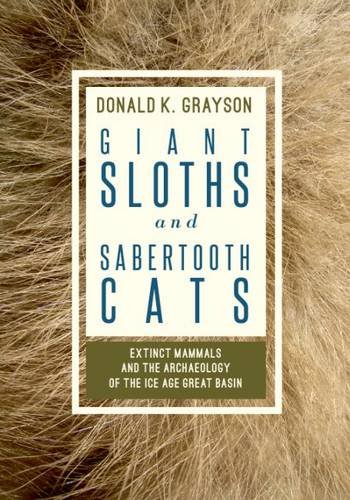
Product details:
ISBN 10: 1607814692
ISBN 13: 9781607814696
Author: Donald K. Grayson
As the Ice Age came to an end, North America lost a stunning variety of animals. Mammoths, mastodon, llamas, ground-dwelling sloths the size of elephants, beavers the size of bears, pronghorn antelope the size of poodles, and carnivores to chase them—sabertooth cats, dire wolves, American lions and cheetahs; these and many more were gone by 10,000 years ago. Giant Sloths and Sabertooth Cats surveys all these animals, with a particular focus on the Great Basin. The book also explores the major attempts to explain the extinctions. Because some believe that they were due to the activities of human hunters, the author also reviews the archaeological evidence left by the earliest known human occupants of the Great Basin, showing that people were here at the same time and in the same places as many of the extinct animals.
Were these animals abundant in the Great Basin? A detailed analysis of the distinctive assemblages of plants that now live in this region leads to a surprising, and perhaps controversial, conclusion about those abundances.
If you are interested in Ice Age mammals or in the Ice Age archaeology of North America, if you are interested in the natural history of the Great Basin or the ways in which the plants of today’s landscapes might be used to understand the deeper past, you will be fascinated by this book
Table of contents:
-
A Sloth in Prison
-
The Great Basin Now and Then
2.1 The Great Basin Now
2.2 The Hydrographic Great Basin
2.3 The Floristic Great Basin
2.4 The Great Basin Then
2.5 The Ice Age
2.6 The Bering Land Bridge
2.7 Ice Age Lakes in the Great Basin
2.8 The Younger Dryas
2.9 Learning about the Late Ice Age Vegetation of the Great Basin
2.10 The Late Ice Age Vegetation of the Floristic Great Basin
2.11 The Late Ice Age Vegetation of the Mojave Desert
2.12 What Is the Late Ice Age? -
A Zoologically Impoverished World
3.1 Extinction Gets Real
3.2 The American Context
3.3 South America
3.4 The Cingulates (Armored Xenarthrans)
3.5 The Pilosa (Sloths)
3.6 The Carnivores
3.7 The Rodents
3.8 The Perissodactyls (Odd-Toed Ungulates)
3.9 The Artiodactyls (Even-Toed Ungulates)
3.10 The Litopterns and Notoungulates
3.11 The Proboscidea (Elephants and Their Relatives)
3.12 The Primates
3.13 Counting South American Genera
3.14 North America
3.15 The Cingulates (Armored Xenarthrans)
3.16 The Pilosa (Sloths)
3.17 Jefferson’s Ground Sloth (Megalonyx jeffersonii)
3.18 The Shasta Ground Sloth (Nothrotheriops shastensis)
3.19 Harlan’s Ground Sloth (Paramylodon harlani)
3.20 The Carnivores
3.21 The Short-Faced Skunk (Brachyprotoma obtusata)
3.22 The Giant Bear (Arctodus simus)
3.23 The Sabertooth Cat (Smilodon fatalis)
3.24 The Scimitar Cat (Homotherium serum)
3.25 The American Cheetah (Miracinonyx trumani)
3.26 The Rodents
3.27 The Lagomorphs (Rabbits, Hares, and Pikas)
3.28 The Aztlán Rabbit (Aztlanolagus agilis)
3.29 The Perissodactyls (Odd-Toed Ungulates)
3.30 The American Horse (Equus)
3.31 The Artiodactyls (Even-Toed Ungulates)
3.32 The Tayassuids (Peccaries)
3.33 The Flat-Headed Peccary (Platygonus compressus)
3.34 The Camelidae (Llamas, Guanacos, Alpacas, Vicugnas, and Camels)
3.35 The Large-Headed Llama (Hemiauchenia macrocephala)
3.36 Yesterday’s Camel (Camelops hesternus)
3.37 The Cervidae (Deer, Moose, Elk, Caribou, and Their Allies)
3.38 The Mountain Deer (Navahoceros fricki)
3.39 The Antilocaprids (Pronghorn)
3.40 Shuler’s Pronghorn (Tetrameryx shuleri)
3.41 The Diminutive Pronghorn (Capromeryx furcifer)
3.42 The Bovids (Cattle, Antelope, Sheep, and Goats)
3.43 The Shrub Ox (Euceratherium collinum)
3.44 The Helmeted Muskox (Bootherium bombifrons)
3.45 The Notoungulates
3.46 The Proboscideans (Gomphotheres, Mastodon, and Mammoths)
3.47 The American Mastodon (Mammut americanum)
3.48 The Columbian Mammoth (Mammuthus columbi)
3.49 Three Extinct Species
3.50 The American Lion (Panthera leo atrox)
3.51 The Dire Wolf (Canis dirus)
3.52 Harrington’s Mountain Goat (Oreamnos harringtoni)
3.53 The Extinct Late Pleistocene Birds of the Great Basin
3.54 The Ciconiidae: Storks
3.55 The Phoenicopteridae: Flamingos
3.56 The Anatidae: Ducks, Geese, and Swans
3.57 The Cathartidae: New World Vultures
3.58 The Teratornithidae: Teratorns
3.59 The Accipitridae: Kites, Hawks, Eagles, and Old World Vultures
3.60 Why So Many Raptors?
3.61 How Many Genera of Mammals Were Lost Toward the End of the American Pleistocene?
3.62 The Loss of the Large -
Dating an Ass
4.1 How to Date an Extinction
4.2 Dating an Ass
4.3 Dating Last Appearances
4.4 The Last Appearance Dates: Birds
4.5 The Last Appearance Dates: Mammals
4.6 Last Appearance Dates in the Great Basin -
A Stable of Ground Sloths
5.1 Fossil Lake, Oregon
5.2 A Brief History
5.3 An Archaeological Aside
5.4 The Fossil Birds of Fossil Lake
5.5 The Fossil Mammals of Fossil Lake
5.6 How Old Are the Fossil Lake Fossils?
5.7 Gypsum Cave, Nevada
5.8 Smith Creek Cave, Nevada
5.9 Mineral Hill Cave, Nevada
5.10 The Huntington Mammoth Site, Utah
5.11 Digging Paleontology -
Extinct Mammals, Dangerous Plants, and the Early Peoples of the Great Basin
6.1 The Late Pleistocene Peoples of the Great Basin: Great Basin Fluted Points
6.2 The Late Pleistocene Peoples of the Great Basin: Great Basin Stemmed Points
6.3 Tracking Abundances
6.4 The Ghosts of Herbivory: Grasses, Megafaunal Fruits, and the Meaning of Thorns
6.5 The Implications of Great Basin Grasses
6.6 Megafaunal Fruits
6.7 The Joshua Tree Debate
6.8 The Deeper Meaning of Thorns
6.9 The Creation of the Mechanical Defense Line
6.10 Conifers Up in Arms?
6.11 Subalpine Conifer History
6.12 The Implications of Pleistocene Lakes
6.13 Slim Pickins for Pleistocene Hunters -
Clovis, Comets, and Climate: Explaining the Extinctions
7.1 Pleistocene Overkill and the Clovis Phenomenon
7.2 A Killer Comet?
7.3 Climate
7.4 Building Individual Species Histories
People also search for:
were giant sloths carnivores
were giant sloths aggressive
were giant sloths dangerous
how many claws do sloths have
were giant sloths fast
Tags: Donald K Grayson, Giant Sloths, Sabertooth Cats, Extinct Mammals, Archaeology, Ice Age, Great Basin
You may also like…
History - Archaeology
The Archaeology of the North American Great Plains 2008th Edition Douglas B. Bamforth
History - Ancient History
The Military Legacy of Alexander the Great: Lessons for the Information Age 1st Edition Ferguson
History - Archaeology
Stepping Stones A Journey through the Ice Age Caves of the Dordogne 2nd Edition Desdemaines-Hugon
Biology and other natural sciences - Paleontology
Climatology
Motions of Ice Hydrometeors in the Atmosphere Numerical Studies and Implications Pao K. Wang
Fiction - Humour


